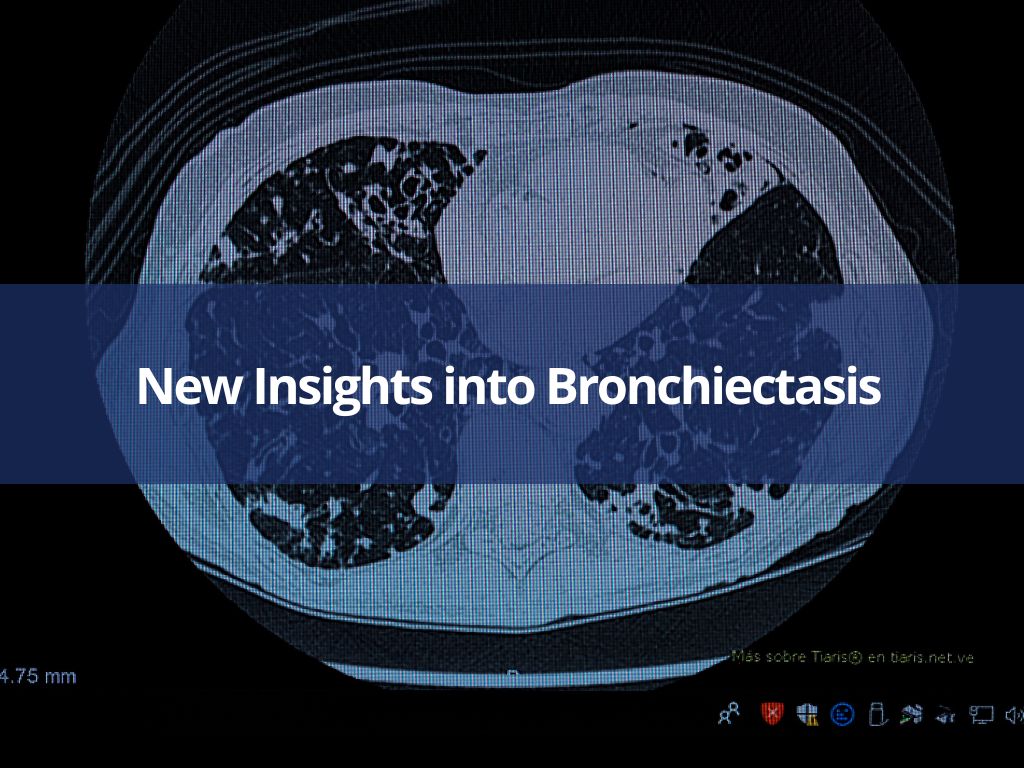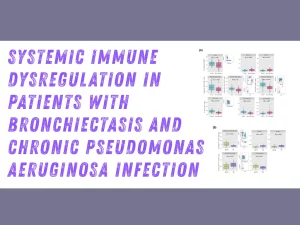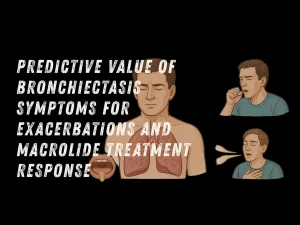Changes in Blood Immune Cell Transcriptomes Associate With Disease Severity, Infection, and Inflammation in Bronchiectasis Patients: Data From the EMBARC-BRIDGE Study

Rationale:
Bronchiectasis is a chronic inflammatory disease, but the mechanisms underlying disease severity are poorly understood.
We performed the largest transcriptomics study inbronchiectasis to-date to investigate associations between immune cell gene expression,inflammation, infection and clinical characteristics.
Methods:
RNA-stabilised peripheral bloodsamples from people with stable bronchiectasis participating in an international, multi-centreobservational study (BRIDGE; NCT03791086) and from matched healthy controls were analysed.
Results:
Comparison of peripheral blood immune cell transcriptomes between people with bronchiectasis and matched controls yielded 5561 significant differentially expressed genes.
Gene set enrichment analysis and pathway clustering analysis showed that 18 of the top 25 differential pathways identified were related to cell metabolism, including oxidative phosphorylationand electron transport chain, all of which were suppressed in bronchiectasis.
218 DEGs were identified between those with mild-to-moderate and severe disease.
The top 25 differential pathways clustered primarily into two sets, one relating to innate immune responses including defence against bacteriaand viruses, which were enriched, and the other to RNA processing including mitochondrial translation, which were suppressed.
Imputation of immune cell proportions showed significantly lower proportions of naive B cells in severe bronchiectasis and higher neutrophil proportions.
There were 222 DEGs between patients ever having recorded Pseudomonas aeruginosa positivity on sputum culture and those without. In patients with and without long term azithromycin use where significant pathways included suppression of B cell signalling and increase in those related to TNF regulation.
Conclusions:
Marked differences in peripheral blood immune cellgene expression were observed between bronchiectasis patients and healthy controls.Transcriptomic changes were associated with disease severity and airway inflammation identifyingpotential novel biomarkers and therapeutic targets
Authors:
M. B. Long, L. Perea M. K. Shuttleworth, J. Pollock, C. Hughes, C. Clarke, M. Shteinberg, S.Aliberti, C. Haworth, S. H. Chotirmall, E. Polverino, P. C. Goeminne, M. R. Loebinger, N.Lorent, F. Ringshausen, R. Faner, O. Sibila, A. Shoemark, J. D. Chalmers.
Read more details at
Those interested in the specific molecular mechanisms, the methods used, and the detailed analyses of the pathways involved can refer to the original article for a deeper understanding of these findings and their clinical implications.
Noticias relacionadas

Bronchiectasis and treatable traits: the journey from concept to clinical practice
Review of the treatable traits approach in bronchiectasis, exploring phenotypes, endotypes, comorbidities, and its translation into clinical practice.

Systemic Immune Dysregulation in Patients With Bronchiectasis and Chronic Pseudomonas aeruginosa Infection
Study reveals systemic immune alterations in bronchiectasis patients with chronic Pseudomonas infection, highlighting persistent immune imbalance.

Symptoms, risk of future exacerbations, and response to long-term macrolide treatment in bronchiectasis: an observational study
Observational study shows bronchiectasis symptoms independently predict exacerbations and identify patients who benefit from macrolide therapy, even with few prior episodes.
Artículos
Infección bronquial
- 769799·Alvar Agusti, Peter G. Gibson, Vanessa M. McDonald. Treatable Traits in Airway Disease: From Theory to Practice
- 779185·Vincent Cottin et Al. Syndrome of Combined Pulmonary Fibrosis and Emphysema. An Official ATS/ERS/JRS/ALAT Research Statement.
- 779199· Bartolome Celli et al. Definition and Nomenclature of Chronic Obstructive Pulmonary Disease: Time for Its Revision
- 779394·Martínez-García M, Faner R, Oscullo G, la Rosa-Carrillo D, Soler-Cataluña JJ, Ballester M, et al. Chronic Bronchial Infection Is Associated with More Rapid Lung Function Decline in Chronic Obstructive Pulmonary Disease. Ann Am Thorac Soc. 2022
- 789482·Martinez-Garcia, M.Á., et al., Chronic bronchial infection and incident cardiovascular events in chronic obstructive pulmonary disease patients: A long-term observational study. Respirology, 2021. 26(8): p. 776-785
Ensayos
- 769685·Nuria Olvera et Al.- Lung Tissue Multi-Layer Network Analysis Uncovers the Molecular Heterogeneity of COPD
- 779885·Ana Rodrigo-T,Jordi Giner,Lidia Perea,Jose Luis Merino,Núria Albacar,Belén Solarat,Diego Castillo,Rosa Faner,Alvar Agustí,Oriol Sibila. Predicting Early Hospital Readmissions in COPD Patients Using an Electronic Nose | Archivos de Bronconeumología
- 788772·Alvar Agustí et al. Add-on inhaled budesonide in the treatment of hospitalised patients with COVID-19: a randomised clinical trial
Imagen obtenida en Canva Pro.
